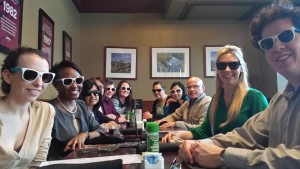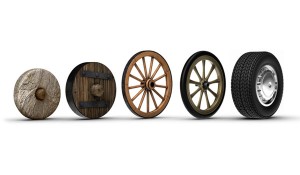A post from our student blogger Catie
If I have learned anything from the MSPL, that lesson would be to always ask questions. Whether we’re in class, speaking to an inventor, or listening to a presentation from a guest speaker, we are individually expected to have at least one question to ask. It may on a surface level seem irritating or may feel like you’re only doing it for the participation points, but it really does serve good purpose. Asking questions shows your professor, inventor, or guest that you are attentively listening to what he or she is saying. It shows that you are invested and interested in the overall message of their speech and would like to know more. A question can enhance the knowledge gained by the audience or may clarify a foggy understanding of part of the content that perhaps other people were wondering as well.
Those are all good purposes for any individual to frequently ask questions, but those of us in patent law know that we have to become pros at mastering it like an art form. For a patent agent, asking questions is not just courtesy; it is our job. In order to do his or her job effectively, a patent agent must ask the right questions of inventors in order to fully understand the invention in all aspects. This is way more difficult than it sounds, as we are pushed to not only ask all the right guiding questions, but we are encouraged to avoid “yes” or “no” questions in order to elicit the most honest and complete responses. Also, regarding interactions with both inventors and the USPTO, patent agents should always pose questions so that they may refrain from accepting everything at face value. Part of the job of a patent agent is to argue, so learning to constantly have questions provides great training for the career.
To some, this may seem like an easy task. However, the MSPL has made me push myself to break out of my own mold. I have always been the kind of person to never ask questions, unless I REALLY had a burning question. I’m a “head nodder”, so I figured that my body language and silence were signs to the person speaking that I understood what was going on. It was somewhat of an annoyance to me to be so strongly encouraged to speak more, and it still takes a lot for me to compose thoughtful, genuine questions to ask on such a frequent basis. That being said, I think that I’ve learned from it, and I am seeing changes in myself. I think it was most obvious to me while I was at mass in Notre Dame’s beautiful Basilica for Ash Wednesday service, and I had to stop myself from raising my hand to ask a question during the homily! Clearly, the habit of asking questions is slowly becoming instilled in me as a subconscious act.
To conclude, the students of the MSPL are learning an incredibly important skill of persistently asking questions, but are also training to master what questions to ask and when to ask them. I am seeing myself develop these skills, and I am subsequently gaining an understanding of how these skills will make me a better patent professional when I am working in the field!

